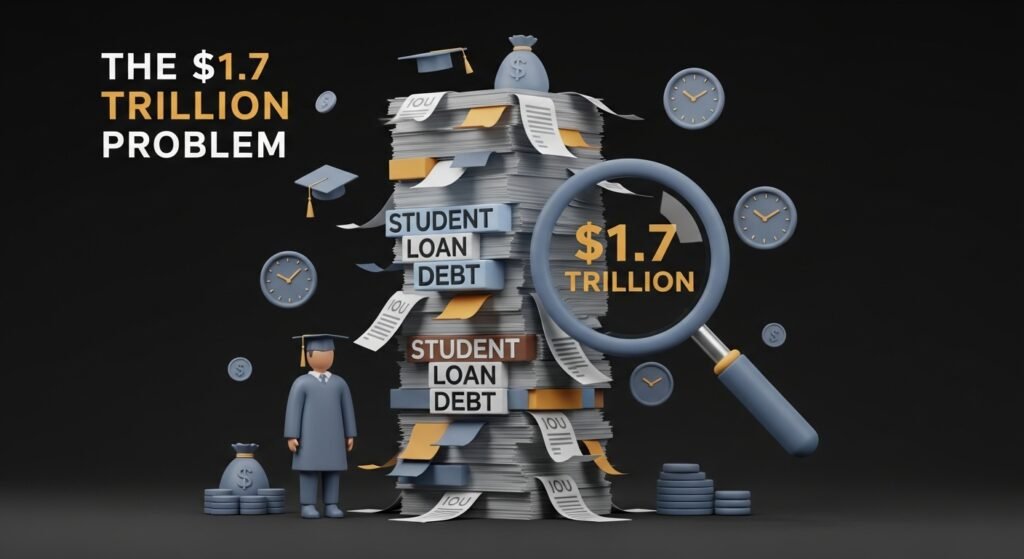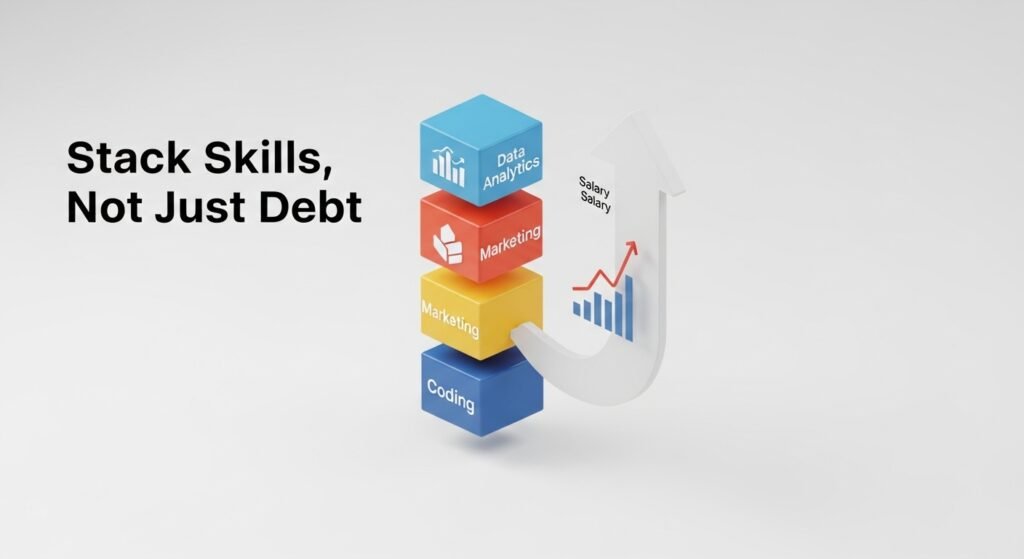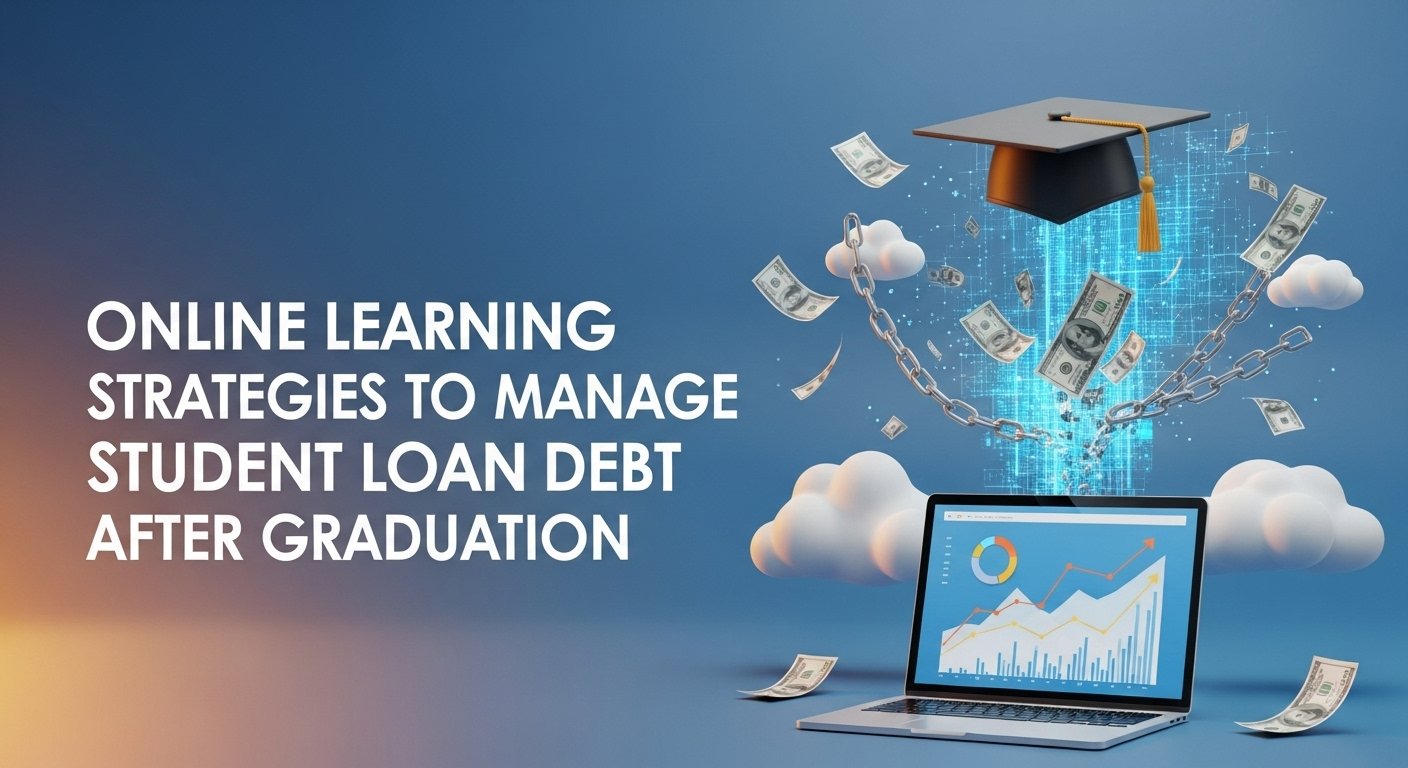Discover how online learning can help you manage student loan debt after graduation. Learn strategic approaches to leverage digital education for financial freedom in 2025.
Introduction: The Digital Lifeline for Graduates Drowning in Debt
The moment I opened my first student loan statement after graduation, my stomach dropped. The numbers seemed to mock my degree, my ambitions, and my financial future. Like millions of Americans, I faced the daunting reality of six-figure debt with an entry-level salary that barely covered rent and groceries. But I discovered a powerful weapon in this financial battle: online learning.
In today’s rapidly evolving job market, online learning isn’t just about acquiring new knowledge—it’s a strategic tool for financial liberation. This comprehensive guide will explore how strategic online learning can transform from an educational pursuit into a powerful debt-management strategy, offering fresh perspectives beyond the typical “get a side hustle” advice that dominates personal finance blogs.

The Student Debt Crisis: Understanding the Battlefield
Before we explore solutions, let’s contextualize the problem. Americans collectively owe over $1.7 trillion in student loan debt, spread across approximately 45 million borrowers. The average Class of 2023 graduate left college with $37,650 in student loans, creating a financial burden that delays major life milestones like homeownership, marriage, and retirement savings.
The traditional advice—refinancing, income-driven repayment plans, and budgeting—only addresses half the equation. These approaches focus on managing payments rather than increasing earning potential. This is where strategic online learning creates a paradigm shift in debt management.
How Online Learning Creates Financial Leverage
Online learning provides unprecedented access to education that directly enhances your earning potential without adding substantial new debt. Unlike traditional degree programs that might require taking on more loans, targeted online learning focuses on specific, high-value skills that employers desperately need and are willing to pay premium salaries to acquire.
The flexibility of online learning means you can skill-up while working full-time, immediately applying what you learn to increase your value to current employers or making yourself competitive for higher-paying positions. This approach represents what I call “strategic educational investment”—focused learning with direct ROI on your earning capacity.
7 Online Learning Strategies to Tackle Student Debt

1. Targeted Skill Stacking for Salary Boosts
Rather than pursuing entirely new degrees, focus on “skill stacking”—adding complementary capabilities that make you more valuable in your current field. For example:
- A marketing professional might add data analytics skills through online learning platforms like Coursera or edX
- A teacher might develop curriculum design expertise through specialized online learning certificates
- An administrative assistant might learn project management methodologies through online learning programs
Research shows that strategic skill additions can increase salaries by 10-20%, directly accelerating your debt repayment capability without changing careers.
How to Apply for Study Abroad Programs in the USA 2025 Guide

2. Industry Certification Through Digital Platforms
Many industries value certifications over degrees for specific roles. Targeted online learning can help you acquire these credentials at a fraction of the cost of traditional education:
- Google Career Certificates in high-demand fields like IT support, data analytics, and UX design
- HubSpot Academy certifications for marketing and sales professionals
- AWS or Microsoft Azure certifications for cloud computing careers
- Project Management Professional (PMP) preparation through online learning platforms
These certifications typically cost between $100-$500 but can yield thousands in increased annual income, representing an extraordinary return on educational investment.
3. Microdegree Programs for Career Pivoting
Sometimes paying off debt requires more significant career changes. Online learning now offers “microdegrees” or nanodegrees that provide targeted education for specific career paths:
- Udacity’s nanodegrees in programming, data science, and autonomous systems
- Coursera’s professional certificates from industry leaders like Google and IBM
- LinkedIn Learning’s career paths in creative, business, and technology fields
These programs typically take 3-6 months and cost significantly less than traditional degrees while providing directly applicable skills for higher-paying industries.
4. Freelance Skill Development for Side Income
Online learning can directly facilitate side income through freelance skill development. Platforms like Skillshare, CreativeLive, and Domestika offer courses specifically designed to build freelance capabilities:
- Digital marketing and social media management
- Graphic design and video editing
- Copywriting and content creation
- Web development and coding
The online learning approach here serves dual purposes: acquiring monetizable skills and learning how to market those skills effectively on platforms like Upwork and Fiverr.
Check Out our free study tools
5. Financial Literacy Education for Smarter Debt Management
Interestingly, online learning about personal finance itself can dramatically improve your debt management approach. Platforms like:
- Khan Academy’s personal finance courses
- YNAB’s (You Need A Budget) financial education resources
- Coursera’s “Personal & Family Financial Planning” course
Can teach you sophisticated debt repayment strategies like the avalanche method (paying highest-interest debts first) or the snowball method (paying smallest balances first for psychological wins).
6. Employer-Tuition Assistance Optimization
Many companies offer tuition assistance programs that remain underutilized. Strategic online learning can help you maximize these benefits:
- Research which programs your employer already partners with
- Understand the reimbursement policies and requirements
- Select online learning programs that align with both your career goals and company needs
- Present your educational plans as value-additions to your current role
This approach represents essentially free education that increases your earning potential without additional financial burden.
7. Entrepreneurship Education for Income Diversification
For some graduates, the fastest path to debt freedom involves creating additional income streams through entrepreneurship. Online learning platforms offer comprehensive entrepreneurship education:
- Udemy’s business startup courses
- Coursera’s “Entrepreneurship Specialization” from Wharton
- edX’s “Entrepreneurship in Emerging Economies” from Harvard
- MasterClass sessions from business icons like Sara Blakely and Howard Schultz
These resources provide the foundational knowledge needed to launch side businesses while maintaining primary employment.
Implementing Your Online Learning Debt Reduction Plan
Phase 1: Assessment (Weeks 1-2)
- Calculate your exact student loan situation (balances, interest rates, repayment terms)
- Research salary benchmarks for your current role and potential advancement roles
- Identify 2-3 high-value skills that would increase your earning potential
- Audit available time for online learning (commutes, evenings, weekends)
Phase 2: Strategic Skill Selection (Weeks 3-4)
- Select online learning programs that align with both market demand and personal aptitude
- Calculate potential ROI of each educational investment
- Schedule learning time as non-negotiable appointments in your calendar
- Inform your supervisor about your development plans (may lead to support or opportunities)
Phase 3: Implementation (Months 2-6)
- Begin your online learning program with consistent weekly effort
- Immediately apply new skills in your current role to demonstrate increased value
- Update your resume and LinkedIn profile with new certifications and skills
- Schedule quarterly meetings with supervisors to discuss advancement opportunities based on new capabilities
Phase 4: Monetization (Ongoing)
- Negotiate raises based on demonstrable increased value
- Apply for higher-paying positions internally and externally
- Develop side income streams using new skills
- Allocate increased income directly to debt repayment
Measuring the ROI of Online Learning for Debt Reduction
To ensure your online learning investments are paying off, track these metrics:
Applied Scientific Thinking: A Practical Framework for Real-World Problem-Solving
| Metric | Baseline | 3-Month Check | 6-Month Check | 12-Month Check |
|---|---|---|---|---|
| Hourly Rate/Salary | $ | $ | $ | $ |
| Student Loan Balance | $ | $ | $ | $ |
| Monthly Payment Capacity | $ | $ | $ | $ |
| Side Income from New Skills | $ | $ | $ | $ |
| Time to Debt-Free (Projection) | X months | X months | X months | X months |
Overcoming Common Online Learning Challenges
While online learning offers tremendous potential, success requires overcoming specific challenges:
- Time Management: Block specific times for online learning and treat them as important appointments
- Motivation Maintenance: Join study groups or find accountability partners to stay on track
- Information Overload: Focus on one course or skill at a time rather than multiple simultaneous programs
- Application Gap: Immediately practice new skills through projects, even if hypothetical
- Analysis Paralysis: Choose a program and start rather than endlessly researching options
The Long-Term View: Beyond Debt Repayment
While this article focuses on using online learning for student debt management, the benefits extend far beyond loan repayment. Developing a habit of continuous online learning creates:
- Career resilience in rapidly changing job markets
- Increased lifetime earning potential through constant skill development
- Professional confidence from demonstrated growth and achievement
- Adaptability to industry changes and technological disruptions
The strategic approach to online learning outlined here doesn’t just solve an immediate financial problem—it establishes patterns that create lasting financial health and career satisfaction.
How to Start Online Tutoring in 2025 — Earn from Home

Conclusion: Your Debt-Free Future Through Strategic Learning
Student loan debt might feel like an anchor holding back your financial future, but strategic online learning can transform that anchor into a sail—propelling you toward higher earning potential, greater career satisfaction, and ultimately, financial freedom.
The path forward requires shifting your perspective: view online learning not as an expense but as an investment with measurable returns. Each course completed, each skill mastered, and each certificate earned represents not just personal growth but financial liberation from the burden of student debt.
Your debt-free future begins not with a magical windfall but with the deliberate, strategic application of online learning to increase your value in the marketplace. The digital education revolution has democratized access to knowledge—now it’s time to harness that power for your financial emancipation.




Pingback: Social Media's Effect on Teen Mental Health - PaidScripts -Tech Education Hub: Courses & Student Resources